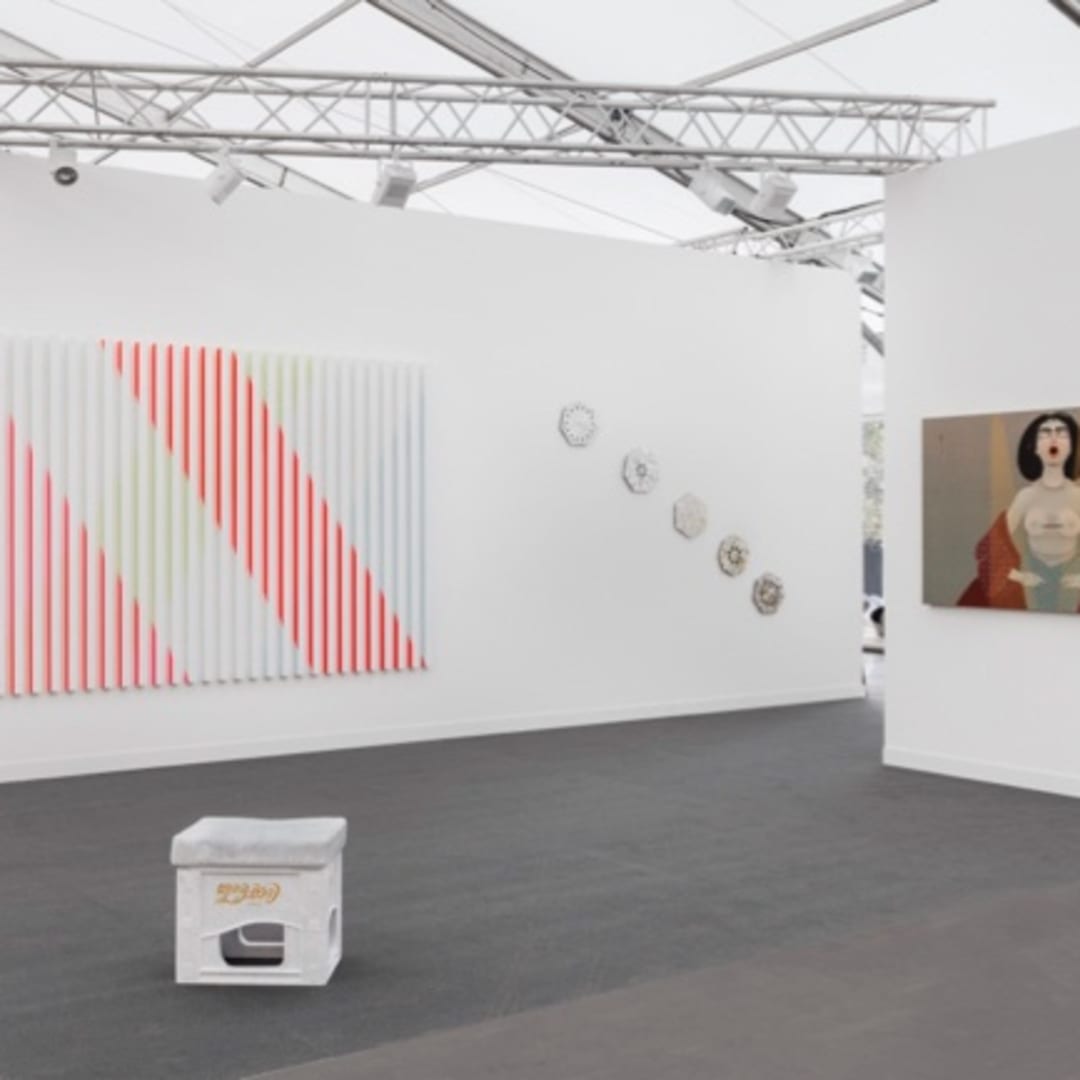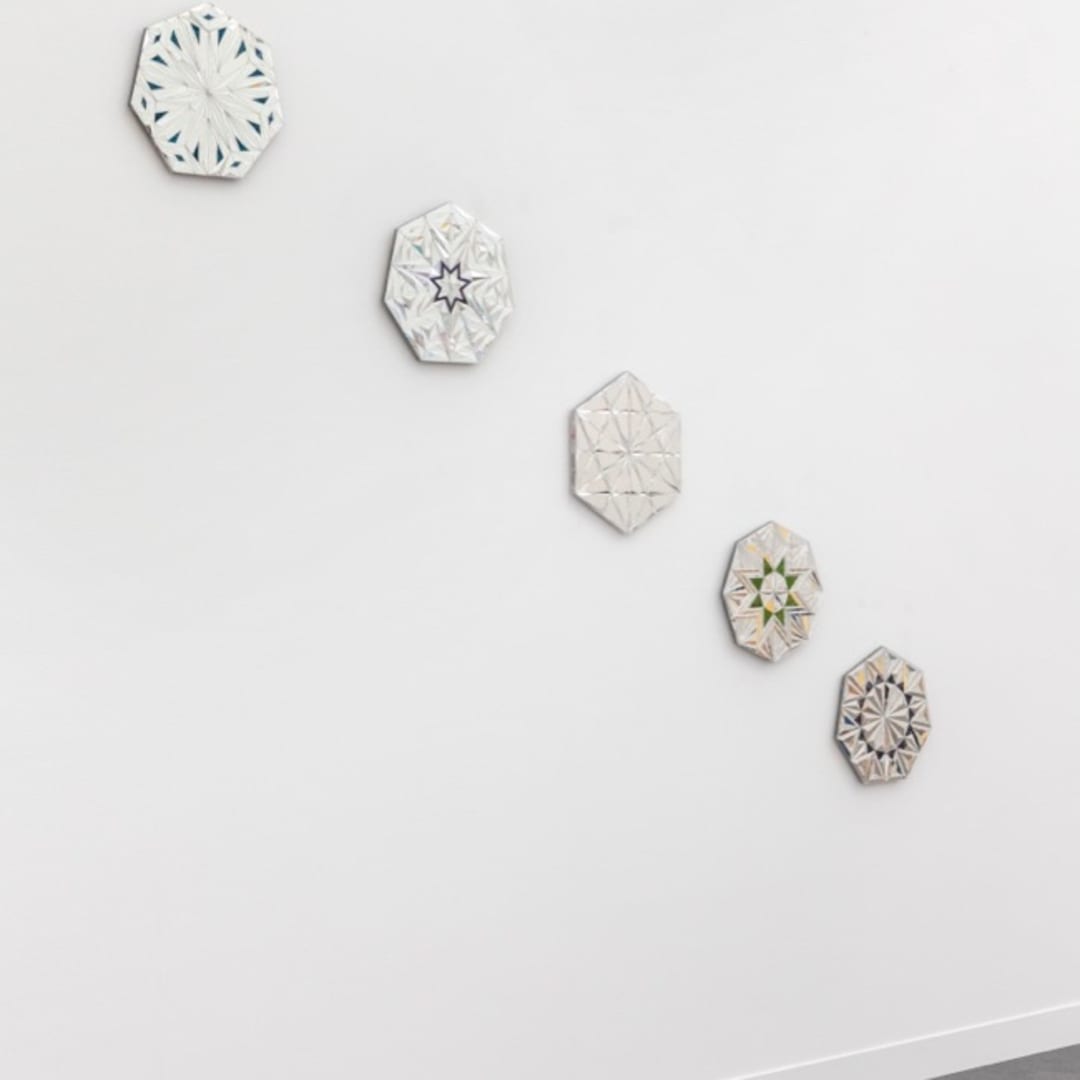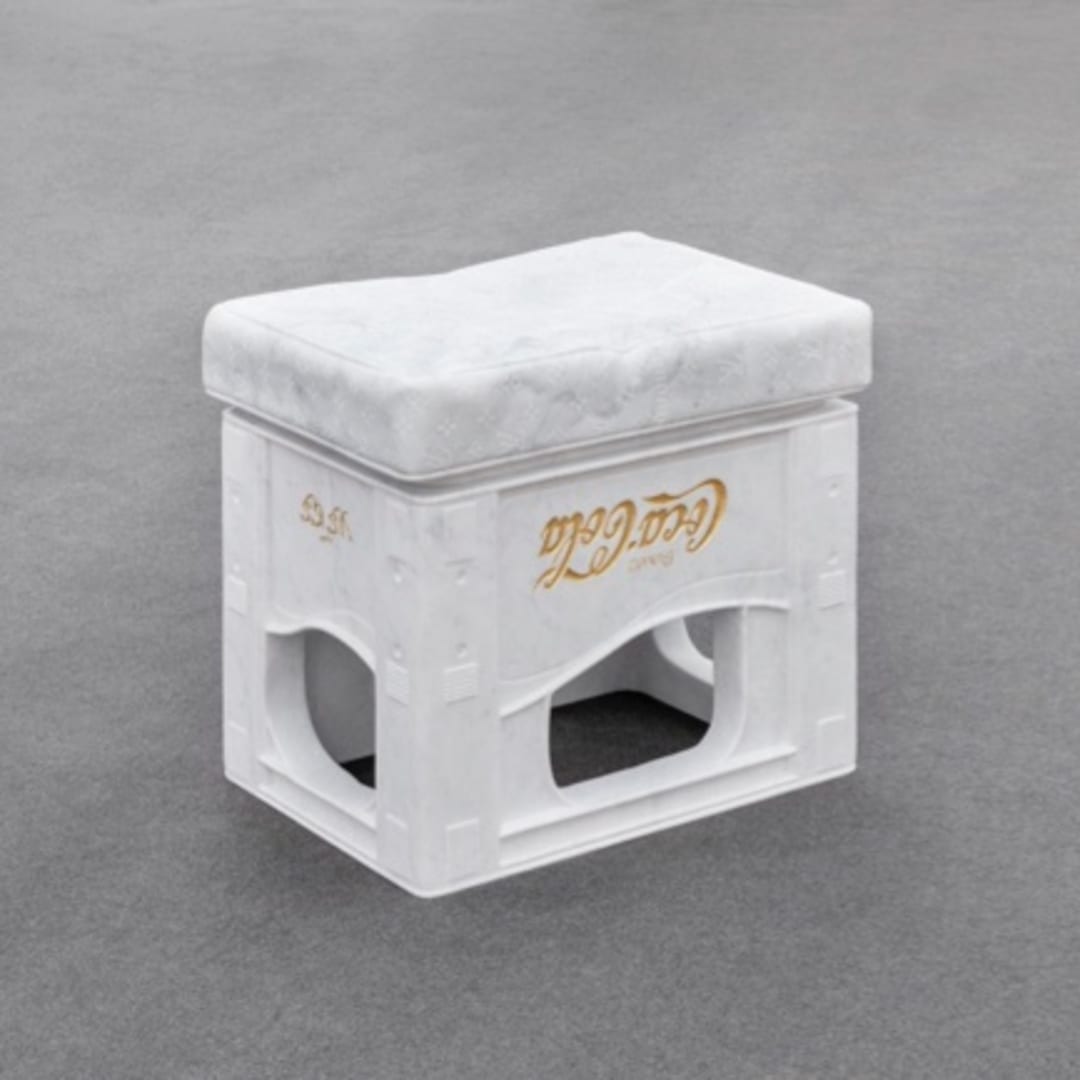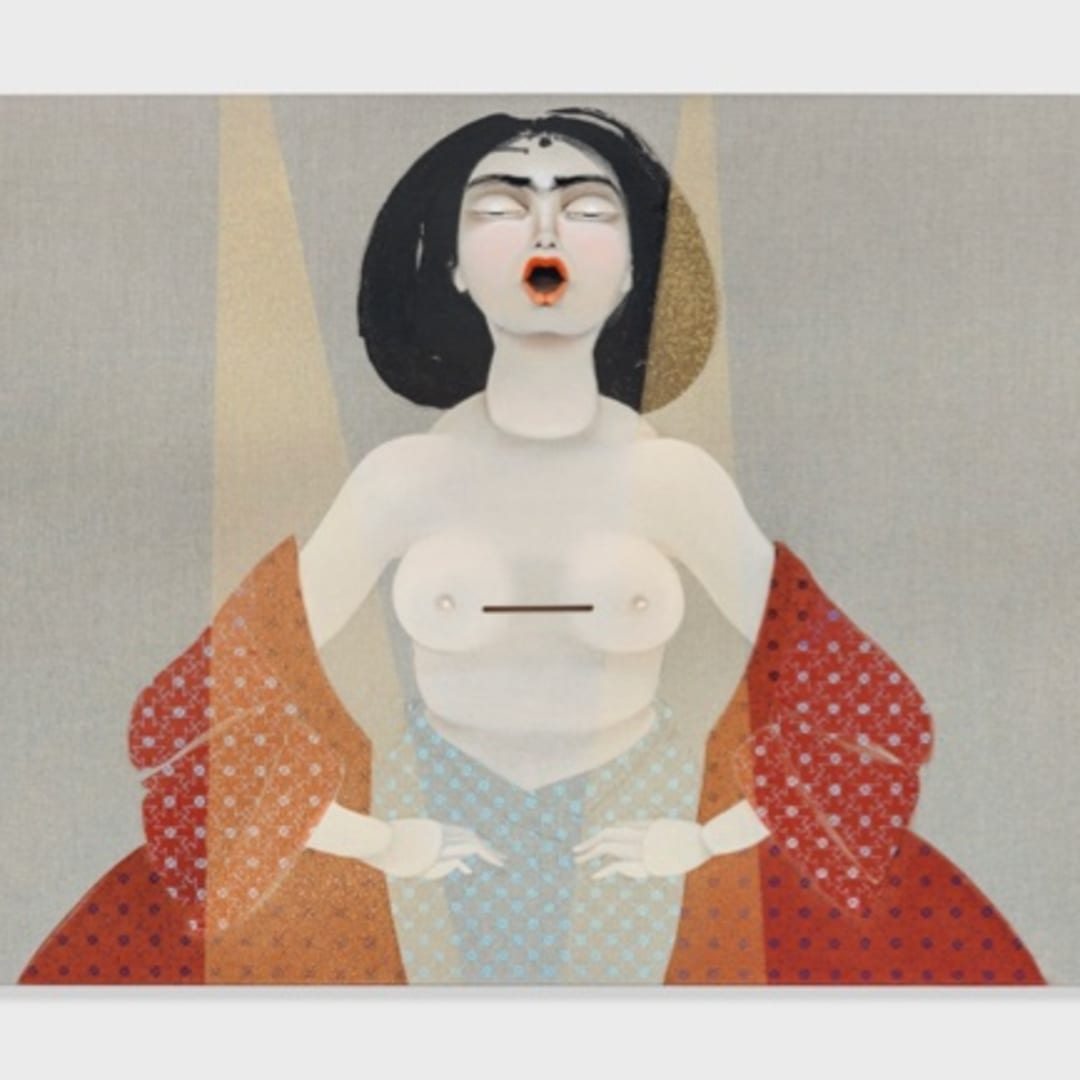The Third Line is pleased to return to Frieze London with a group presentation of sculptural works by Hassan Hajjaj, Hayv Kahraman, Joana Hadjithomas and Khalil Joreige, Monir Shahroudy Farmanfarmaian, Rana Begum and Zineb Sedira. Through material manipulations of light, surface and memory, these five practitioners highlight how sculpture can define and disrupt physical, conceptual, and political spaces and reveal the aesthetic, intellectual and visceral dimensions of the medium.
Hassan Hajjaj’s practice spans many techniques and disciplines, including the design and production of lamps, stools and poufs from recycled North African objects, as well as custom-made clothes and photography. LVCC epitomizes Hassan’s inclusion of past, present and future within his oeuvre, and hints at his colorful Le Salon decors made out of plastic Coca-Cola crates.
Hayv Kahraman’s new body of work Silence is Gold continues to engage the viewer by utilizing elements of Italian Renaissance painting and illuminated Arab manuscripts, while reflecting on the female body as commodity or perhaps even a tool to raise money and promote celebrity through humanitarian efforts. Her women continue to face the viewer, unashamed, defiant, with donation box-like slits across their bare bodies as references to the fetishized gaze the West often throws.
An Athenian Time Capsule by Joana Hadjithomas and Khalil Joreige makes the deterioration of cities and symbolic sites felt and stresses the effects of time and memory, both a very personal memory and the collective memory of a city. The work is a continuation of their ongoing Unconformities project, the outcome of several years of collaborative research and investigation and for which Joana and Khalil were awarded the prestigious Marcel Duchamp prize in October 2017. The artists place excavated elements of a city in a cylindrical structure in which the details of the materials can be viewed – or read– in detail.
Monir Shahroudy Farmanfarmaian’s iconic mirror mosaics are presented in a set of five smaller-scale works—a hexagon, pair of heptagons, an octagon and a nonagon. They remind us of the sacred geometry principles that have been at the core of the artist’s practice for the past five decades. Each of the shapes possesses mathematical attributes and consequently, its own meaning. Thus, the hexagon becomes a symbol of the six virtues (generosity, self-discipline, patience, determination, insight and compassion), while the heptagon represents the universe (the seven visible planets, seven days of the week, and the seven colors of the rainbow). Joining these mirror works is a felt-tip drawing that combines Monir’s exploration of geometric forms with her long-standing interest in architecture: the shapes of her vibrant layers hint at the forms of nomadic tents, minarets, and models for architectural sculptures.
Minimal in their formal language, Rana Begum’s bar works abstract moments of accidental, aesthetic wonder and impose order and system with their hard edged repetition and symmetry. Maintaining a perpendicular format and intuitive application of colours, the works demand an active participation between the audience and the pieces themselves, requiring the viewer to move around the work in order to experience the multiple layers of symmetry.
Conceived for her major survey exhibition at Sharjah Art Foundation, Zineb Sedira’s Sunken Stories focuses on wooden ships, a symbol of Sharjah’s economy and the maritime history of the Arabian Gulf. Zineb places the miniature boats in resin, mimicking the shipwrecks first explored in her Shipwreck series. The work continues Zineb’s explorations of migration, tradition, and oral history.











